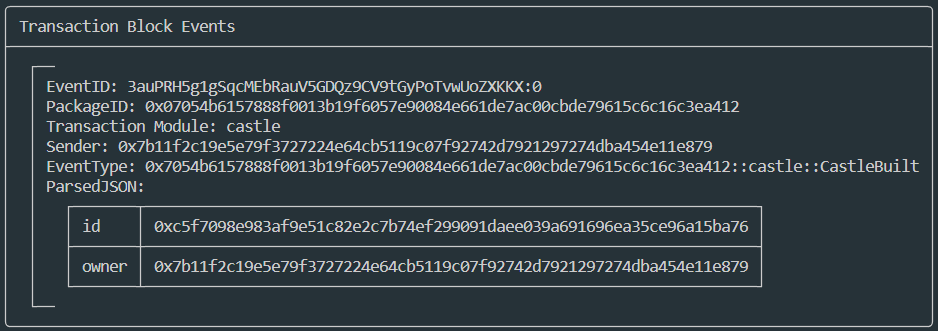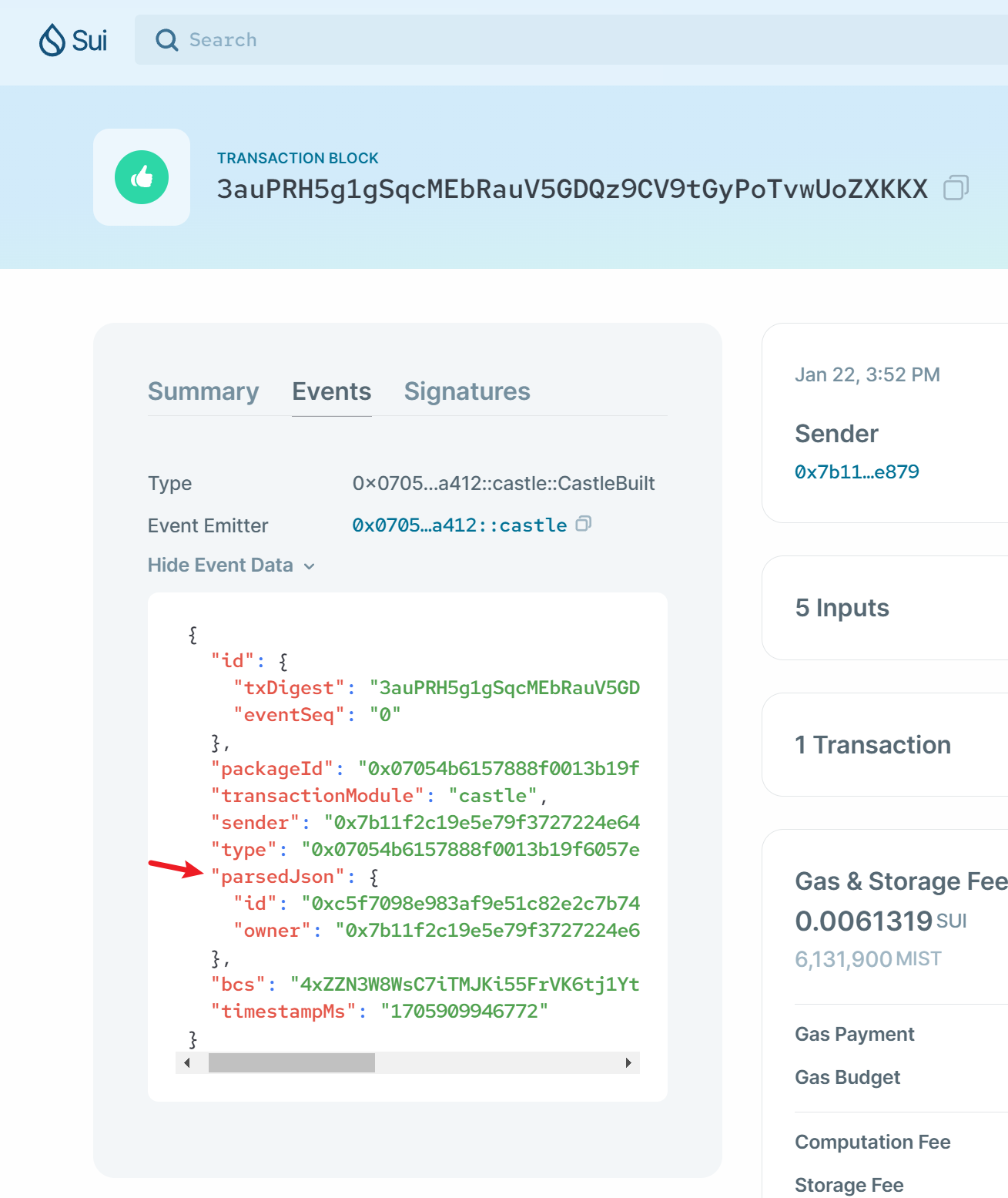发布事件
Sui 中的另一个重要概念是事件。 事件可以用于跟踪链上的活动,这在开发人员希望跟踪用户在特定合约交互(例如 NFT 铸造)期间的行为时特别有价值。
在我们的 Move Castle 游戏中,建造城堡的行为类似于铸造过程。因此,记录和跟踪此类事件非常重要。
在发布事件之前,你必须定义其结构,在 castle.move 中:
/// Event - castle built
public struct CastleBuilt has copy, drop {
id: ID,
owner: address,
}
然后使用 event::emit 来发布事件,在 build_castle 函数中:
use sui::event;
entry fun build_castle(...) {
...
// 将城堡对象转移给拥有者。
let owner = tx_context::sender(ctx);
transfer::public_transfer(castle, owner);
event::emit(CastleBuilt{id: id, owner: owner});
}
很简单,对吧?在 Sui testnet 上试试。
Sui 客户端 CLI 输出:

Sui explorer 交易页面:

同样地,在战斗结束时发布战斗结果。在 battle.move 中添加事件结构:
/// Battle event
public struct CastleBattleLog has store, copy, drop {
attacker: ID,
winner: ID,
loser: ID,
winner_soldiers_lost: u64,
loser_soldiers_lost: u64,
reparation_economic_power: u64,
battle_time: u64,
reparation_end_time: u64
}
在 battle 函数的末尾发布事件:
use sui::event;
entry fun battle(castle: &Castle, clock: &Clock, game_store: &mut GameStore, ctx: &mut TxContext) {
...
// 6. 发布事件
event::emit(CastleBattleLog {
attacker: attacker_id,
winner: winner_id,
loser: loser_id,
winner_soldiers_lost: winner_soldiers_lost,
loser_soldiers_lost: loser_soldiers_lost,
reparation_economic_power: reparation_economic_power,
battle_time: current_timestamp,
reparation_end_time: current_timestamp + BATTLE_LOSER_ECONOMIC_PENALTY_TIME
});
}